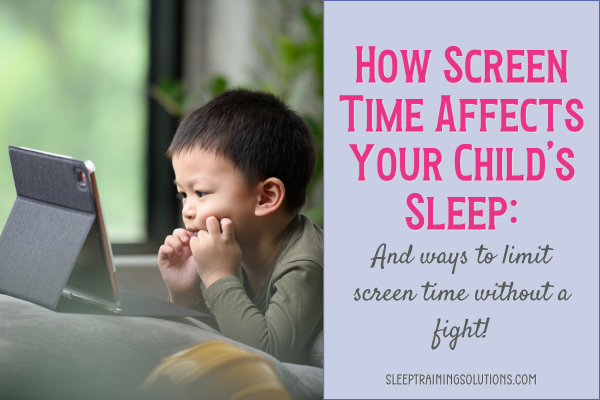What to Include for the Best Bedtime Routine for Your Toddler or Preschooler
Steps to include in your toddler’s bedtime routine
Wondering what you should include in your child’s bedtime routine? Here is a list of things to include - and ones to avoid - for the best bedtime routine for your toddler or preschooler to help transition to sleep!
#1 A consistent bedtime routine (with a bedtime routine chart)
Children thrive on consistency. When you implement a consistent bedtime routine, it cues their brain and their body to get ready for sleep, they feel more secure and safe, and, according to this study, children are able to go to sleep earlier, fall asleep faster, and have fewer night wakings.
It also makes it easier for you and any sitters who may be putting your child to sleep at bedtime because your child already knows the drill, so things can go more smoothly.
Once your child can understand how a bedtime routine chart works, you can make one using things around your house or purchase one that will fit your needs, like this one that is customizable, sturdy and wooden and has the ability for your child to “check off” each item.
The bedtime routine should be no more than 30 minutes in length. An example of a bedtime routine could look like:
#2 Playtime
Playtime is in the bedroom with items found in the bedroom. This is not the time to let your child run down to the basement to grab his favorite toy because one, that will take time out of the 30-minute routine and two, playing with the favorite toy-of-the-day will make it much harder to stop playing with it before bed.
Playtime should be child-directed for a few minutes, just to get out those last bursts of energy before getting into the crib or bed.
To make sure playtime doesn’t last the whole bedtime routine, try a visual timer.
#3 Two trips to the potty
For potty-trained kiddos, have your child use the potty at the very beginning of the bedtime routine and then as the last step in the bedtime routine.
This helps with wet diapers or pull-ups during the night and/or requests to use the bathroom (again!) as a stalling technique.
There are so many pieces to successfully sleep training - Download your free PDF and get weekly sleep tips to help set you up for success!
#4 Storytime
Storytime should consist of two books (maximum). If you offer to read 3-4 books, the bedtime routine will just get too long!
Offer to read to your child at other times during the day if they love that time listening to you reading to them and are always asking for more books at bedtime.
#5 Choices
One of the reasons kids fuss or stall at bedtime is because they feel like they have no control over that time.
To help them feel like they do have some say in the process, offer choices with a limited pool of options to choose from for things that ultimately don’t matter.
Ask which pajamas do you want to wear - the blue ones or the green ones? Which two books do you want to read [and offer four books]? You’ve created a pool of choices and they get the final decision.
This cuts down on the time to make choices because you’re not sending them to the pajama drawer or the bookcase to look through alllll the options.
#6 Undivided attention
The bedtime routine should be one parent or caregiver with the child. During the bedtime routine, try to minimize distractions. So don’t bring your cell phone in their bedroom, and try to coordinate dinner before starting the bedtime routine, etc so your spouse isn’t popping in asking you questions.
When your child feels she has your undivided attention, it will fill her attention bucket so she isn’t looking for that attention at the wrong times (for example stalling at the end of the bedtime routine, waking in the middle of the night, or too early in the morning).
One way to really connect with your older child is to ask these 3 questions.
Of course, there are situations where that just isn’t possible because you’re the only one putting multiple kids to bed. For more tips on that situation, check out How to juggle bedtime solo with multiple kids.
#7 Physical attention
One of the ways young children give and receive love is with hugs, kisses, and cuddles. They’re in a stage of exploration and independence and want (and need!) to know that you’re their safe home base to always come back to.
There are many studies showing the benefits of hugging, helping to:
make your child smarter
keep them healthier
control their emotions and stop tantrums faster
lower stress hormones and develop resilience
create a stronger bond with your child
#8 Use a toddler clock
Once your child is developmentally ready for a toddler clock, they can be extremely helpful.
Using a toddler clock like this one will help your child understand when it’s time for bed and when it’s ok to wake up in the morning.
Set the colors for easy understanding (Red is like a stop light = Time to stop and go to sleep. Green is for go = Time to get up.)
#9 Expectations expressed (and repeated!)
You want your child to stay in his bed, lying down quietly, with eyes closed so he can fall asleep more quickly and easily. In our adult brains, it makes sense, but to a two-year-old, they don’t know that you expect that to happen EVERY night!
Every time you put your child in the crib or tuck your preschooler into bed, remind them of what you want them to do.
And remember…don’t put ideas into their heads! You want to say, “Lie down with your eyes closed until your clock says it’s morning” NOT “Don’t climb out of the crib”. This will just put an idea into his head that he may not have even considered before!
Things NOT to include in your toddler’s bedtime routine
#1 Screentime
The blue light that comes off a TV, computer, iPad, or cell phone screen can delay the production of melatonin and the core temperature drop needed for your little one to get sleepy, so I always suggest no screens within 90 minutes of bedtime.
I’ve worked with some kids who are supposed to do reading for 30 minutes or an assignment on an iPad…and it often ends up towards the end of the evening. If your child does reading at the end of the bedtime routine, consider a reading light that blocks blue light, and if your child will need to be on a screen later in the evening, try these glasses.
#2 Food
If your child didn’t eat a big enough dinner or dinner was much earlier, your child may say he’s hungry at bedtime.
Offer the bedtime snack BEFORE you go to his room to start the bedtime routine - there should be no eating during the bedtime routine.
For a detailed post on this topic, check out Best bedtime snacks for kids.
#3 Liquid
If you’ve read any of my other blog posts, you know that I always recommend that you teach your child that feeds are for nutrition, not to get sleepy. Having a feed-sleep association will keep your child from falling asleep independently and staying asleep!
Once your child has her first birthday, the bedtime feed (nursing or bottle) should not be a part of the bedtime routine. (Please continue to breastfeed as long as you want to, but feeding should not be a part of the bedtime routine at this point.)
#4 Setting the mood
The point of the bedtime routine is to cue the body that it’s almost time for sleep…not help get your little one drowsy!
Your child should be wide awake throughout the routine, so keep the lights ON.
While you’re at it, put the lock on the glider (or put a wedge of diapers under the rocker)…and don’t turn on any soothing lullabies :)
#5 A full bed
I’m aging myself here, but does your child’s bed look like a scene from ET? If your child has so many “friends” sleeping in the bed that it’s like an obstacle course to find a place to lie down, it’s time to “cull the herd”!
Have your child choose a maximum of two things she wants to sleep with - two stuffed animals, two blankies, or one of each.
She can switch out which two things she chooses each night, but every night it’s a maximum of two.
Remember that loose blankets and stuffed animals are not recommended for the crib until after your child’s first birthday.
How to create a bedtime routine for toddlers and preschoolers
Related Posts:
This post is for informational purposes only and may not be the best fit for you, your child and/or your personal situation. It shall not be construed as medical advice. The information and education provided here is not intended or implied to supplement or replace professional medical treatment, advice, and/or diagnosis. Always check with your child’s physician or medical professional before trying or implementing any information read here.
Sleep Training Solutions is a participant in the Amazon Services LLC Associates Program, an affiliate advertising program designed to provide a means for sites to earn advertising fees by advertising and linking to Amazon.com and affiliated websites. I will earn a small commission, at no additional cost to you, if you purchase them.







